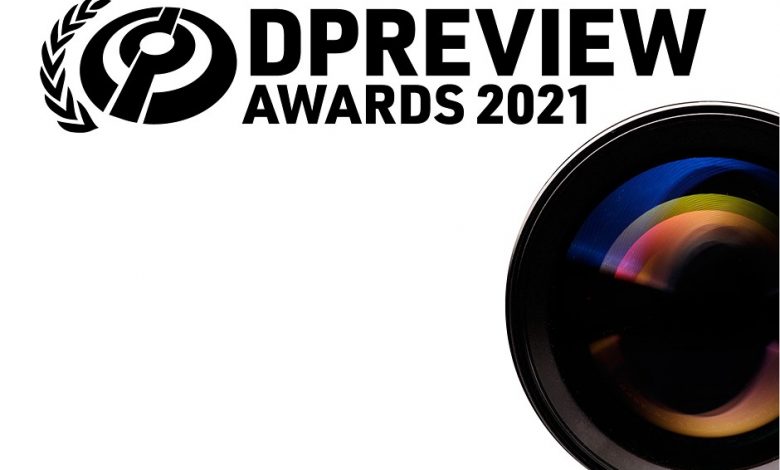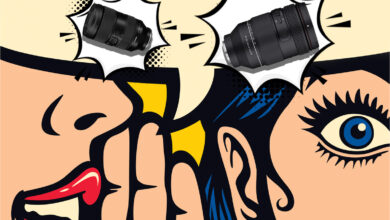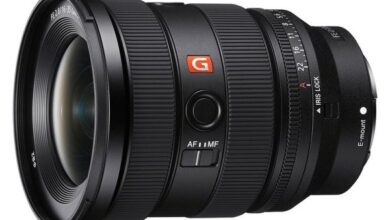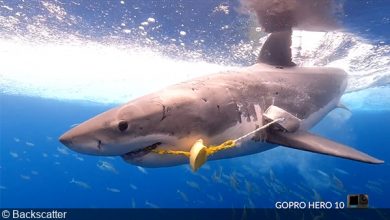Our favorite gear, rewarded: DPReview Awards 2021

DPReview Awards 2021
 |
It’s that time of year again, and with the holidays just around the corner, we’ve collated our annual list of what (in our opinion) constitutes the best of the year’s major product releases. If 2020 was the year of Covid lockdowns, working from home, and dreams of travel, 2021 has been a dreary slog of almost-but-not-quite-normality. Meanwhile, supply-chain issues across the world continue to impact virtually every industry, in every country – consumer electronics being no exception.
Partly as a consequence of all this disruption, 2021 was a relatively quiet year for new cameras, but plenty of new lenses were released, alongside plenty of drones and accessories. Meanwhile, smartphones continued getting smarter, and video features kept getting better and better.
So join now, us as we look back over the year’s releases and pick our favorites in various different categories, from high-end cameras to camera drones. As always, if you disagree with our picks (or you just want to say hi) leave a comment.
Best accessory
 |
Shortlist:
- Apple M1 / M1 Max System-on-chip laptops
- Atomos Ninja V+
- Rode Wireless Go II microphone system
- Really Right Stuff Ascend-14 travel tripod
Runner up: Really Right Stuff Ascend-14 travel tripod
There are countless travel tripods on the market, all of which claim to provide the perfect combination of size, weight and performance. Obviously there’s no such thing as ‘perfect’ but few come as close as the Really Right Stuff Ascend-14. This pricey option is that rarest of things – a genuinely compact, full-featured tripod which with little modification could comfortably become your main tripod for daily use. Its weight limit of 30 lbs (13.6 kg) means it can handle some serious camera gear, and at only 18.6 in (47 cm) long when packed, it’s still in ‘travel-sized’ territory, fitting easily into the side pocket of a camera backpack or even inside a small suitcase.
There’s no denying that at $1,450 the Ascend-14 stands out in its class as a seriously expensive tripod, but it’s also a cut above most of its competitors. It’s standard configuration packs a maximum of features into a very compact form-factor at the expense of slightly fiddly operation. But with the addition of the optional ball-head adapter and a conventional compact head, the Ascend-14 becomes a convincing (but still very small) tripod for everyday use. It’s this versatility which earns the Ascend-14 the runner-up spot for Best Accessory.
Read more about the RRS Ascend-14
Winner: Apple M1 / M1 Max System-on-chip laptops
 |
While the winner of Best Accessory isn’t a single product, the rollout of Apple’s M1 and M1 Max system-on-chip architecture across its line of MacBooks and MacBook Pros might be the single most exciting development in laptop computing for professionals in quite some time.
For years, imaging professionals have been getting increasingly frustrated by Apple’s spotty support for creatives. Whether it was poorly-designed keyboards or the constant winnowing-away of useful I/O ports, it seemed for a long time as if Apple had forgotten about the creative pros that helped make Macs into the go-to computers for photography and video-focused power users.
With the emergence of Apple’s M1 and now M1 Max-equipped laptops, it really seems like the company has been listening. They’re faster, more efficient and (in the case of the new 14in and 16in MacBook Pros) substantially more pro-friendly than the Intel Macs that came before them, offering blistering performance which helps to (finally) justify their high prices.
The new 14 and 16-in Macbook Pros stand out in particular. Aside from the performance of the chips and the unified memory that allows the GPU to sing, it’s the displays on these models that could change everything for photographers. They’re true HDR displays capable of 1600 nits peak and 1000 nits sustained, with 10,000 individually modulating mini-LED zones to maintain high static contrast. You can view HDR movies or even HDR photos shot on your iPhone… in HDR, and that’s a sight to behold.
Even if you can’t countenance springing $2,000+ for one of the newest MacBook Pros, the entry-level M1-equipped MacBooks are still among the most powerful options out there in terms of their price to performance ratio, earning the Apple M1 / M1 Max system-on-chip range of MacBooks the winning spot in this year’s DPReview Award for best accessory.
Read more about the new Apple MacBook Pro (16in)
Best smartphone camera
 |
Shortlist:
- Apple iPhone 13 Pro
- Google Pixel 6 Pro
- Samsung S21 Ultra
- Sony Xperia Pro-I
Runner up: Google Pixel 6 Pro
The Pixel 6 Pro might be the most significant update in Google’s Pixel line of smartphones yet. Featuring a new ‘Tensor’ processor developed by Google in-house, and upgraded camera hardware, the Pixel 6 Pro is one of the best camera-equipped smartphones on the market.
While it undercuts its Apple competitors in terms of price, the 6.7in Pixel 6 Pro features a premium construction and solid battery life, and a very good suite of photo features. These center around the three rear cameras: A 12MP ultrawide, a 48MP 4x (104mm equiv.) telephoto that uses a comparatively large 1/2″ sensor, and finally a 26mm equiv. main camera that uses a whopping 1/1.3-inch sensor and offers an eye-catching 50MP of resolution. Image quality is excellent, with the Pixel 6 Pro offering a useful increase in telephoto power, especially, over the iPhone 13 Pro models.
Of course, with smartphones, it’s all about the computational smarts. Google offers ‘Magic Eraser’ technology to automatically remove unwanted objects from the scene. Motion Mode tries to automatically blur moving objects in a scene while keeping the main, most-static one, sharp. Perhaps most impressive is ‘Face Unblur’, which uses attempts to de-blur soft faces in low light (where slow shutter speeds can blur moving kids) by taking images with its main and ultrawide cameras at different shutter speeds and combine the images for a sharp result (using ML-based upscaling).
Add excellent stabilization and very good 4K video performance that uses HDRnet technology to pull the most dynamic range possible from the sensors into the mix, and the Google Pixel 6 Pro is one of the best Android phones on the market right now.
Read more about the Google Pixel 6 Pro
Winner: Apple iPhone 13 Pro
 |
Apple has been in the smartphone game for a long time, and it shows. The iPhone 13 Pro models really pack a punch: The three cameras in both the Pro and Pro Max models now span a 6x optical focal length range, and with the brighter F1.5 aperture on the main camera and its larger sensor, light gathering ability has increased 2.2-fold and 47% over the 12 Pro and 12 Pro Max models. Sensor-shift and optical stabilization work together on the main camera for steadier shots, improving Night Mode. A brighter F1.8 aperture on the ultra-wide yields better pictures in challenging conditions. The 77mm equiv. telephoto gives you more subject isolation, with improved image quality and contrast, and it works with Night Mode this year.
Apple made a splash in the video world this year in introducing ‘Cinematic Mode’, essentially a Portrait Mode for video that uses a depth map created from pairs of camera modules to create a depth-of-field effect that you can change after-the-fact. You can even re-focus your footage in post, and Apple used machine-learning to train the camera to make intelligent autofocus decisions.
Add to all this our favorite feature increasingly included in Apple’s ecosystem: HDR playback (as distinct from HDR capture). HDR stills and video have more contrast, appear brighter and less flat on the HDR OLED display – in other words, more ‘lifelike’. For years HDR photos have fallen flat, pun intended, when displayed on SDR (standard dynamic range) displays. No more. Colors and white balance are relatively neutral but pleasing, while a wide color gamut allows for saturated colors (but only when appropriate, unlike some competitors).
Simply put, photos and videos taken on and iPhone 13 Pro, viewed on device (or on one of the new M1 14″/16″ MacBook Pros) are a sight to behold, and the experience of taking and editing media is a breeze. For these reasons, the iPhone 13 Pro takes the winning spot this year for DPReview’s best smartphone of the year.
Read more about Apple iPhone 13 Pro
Best drone
 |
Shortlist:
- DJI Air 2S
- DJI FPV Drone
- DJI Mavic 3 Cine
- DJI Mini SE
- NASA Ingenuity Mars Helicopter (honorable mention)
Runner up: DJI Mavic 3 Cine
OK, we have to admit we were seriously tempted to name the NASA Ingenuity Mars Helicopter our 2021 drone of the year. With features like solar-charged batteries, a 12MP color camera with a global shutter, the ability to fly in an atmosphere with 1% the density of Earth’s, and a range of over 300 million km (take that, DJI!), what’s not to like? But mostly, it’s just so cool. However, with a cost of $85 million and little chance of it hitting store shelves soon, it will have to make do with an honorable mention.
Thankfully, our runner-up for 2021, the DJI Mavic 3 Cine, is both more affordable (relatively speaking) and actually available for purchase without going through a government procurement process. Its 20MP Four Thirds sensor raises the bar for all-in-one drones, and its 46-minute flight time will keep you in the air for a long time on just a few batteries. Additionally, its 5.1K/50p and 4K/120p video capture should cover just about any use case.
What’s even more impressive is its ability to record video internally using ProRes 422 HQ, an extra 1TB of onboard storage, and DJI’s new RC Pro controller, which is a joy to use. If you really need the best all-in-one drone on the block, this is it.
Read more about the DJI Mavic 3 Cine
Winner: DJI Air 2S
 |
The DJI Air 2S may be the best all-around consumer drone we’ve seen. It strikes an outstanding balance between features and price, and in some cases, outperforms more expensive models. Notably, it addressed one of the most frequent requests from drone enthusiasts: putting a camera with a 1”-type sensor on a compact model that wouldn’t break the bank.
The Air 2S makes excellent use of that camera, capturing 5.4K/30p and 4K/60p video while packing in advanced features like 10-bit D-Log. It’s capable of delivering impressive results in the right hands. However, it’s not all about the tech. The Air 2S is also fun to fly, and even beginners can get great results. For example, DJI’s MasterShots feature automatically captures a series of pre-programmed shots of a subject, then generates a highlight video complete with music. It’s a fun way to create shareable content, even if you’re not an experienced pilot or video editor.
The Air 2S reset our expectations for a consumer drone, bringing high-quality imaging to the masses in a product that’s friendly and approachable, earning it our Best Drone award for 2021.
Read more about the DJI Air 2S
Best zoom lens
 |
Shortlist:
- Canon RF 14-35mm F4L IS USM
- Fujifilm GF 35-70mm F4.5-5.6 WR
- Olympus M.Zuiko Digital ED 8-25mm F4 Pro
- Sony FE 70-200mm F2.8 GM OSS II
- Tamron 28-75mm F2.8 Di III VXD G2
Runner-up: Sony FE 70-200mm F2.8 GM OSS II
The FE 70-200mm F2.8 GM OSS II is the much-improved successor to one of Sony’s original F2.8 zooms. The first-generation 70-200mm wasn’t bad (if you got a good one) but it was outclassed by newer built-for-mirrorless equivalents by the likes of Canon and Nikon.
The Mark II is 30% lighter than its predecessor, and has a host of changes and improvements, including an all-new optical design, new coatings, beefed-up weather-sealing and new focus motors. The end result is a lens that focuses remarkably quickly, and optically speaking delivers excellent bokeh while remaining very sharp – much sharper than its predecessor – across the frame and throughout its aperture range. Chromatic aberrations are also well controlled. This is no iterative update – the Sony FE 70-200mm F2.8 GM OSS II is a substantial improvement over its predecessor and one of the best lenses of its kind.
Read more about the Sony FE 70-200mm F2.8 GM OSS II
Winner: Tamron 28-75mm F2.8 Di III VXD G2
 |
When the original Tamron 28-75mm F2.8 came out back in 2018, we all agreed that it was one of those lenses that really elevated the entire E-mount system as a whole. With an affordable price-tag, good optical performance and light-yet-solid build, we could easily forgive its relatively few weak spots.
Fast-forward to today and the Tamron 28-75mm F2.8 G2 addresses just about every one of those drawbacks and then some – compared to the original, there’s increased corner sharpness, smoother bokeh, an updated autofocus motor, better manual focus feel and a customizable button on the barrel. In spite of the improvements, the new lens is actually lighter than the old one, and you get the same modestly sized 67mm filter thread. The price to pay for this impressive update? Only an additional $100 USD (bringing it to $899 MSRP).
Thus, the spirit of the original lens lives on in this second version, giving Sony E-mount users a solid, affordable F2.8 zoom that continues to be a selling point for the system as a whole. Bravo, Tamron.
Read more about the Tamron 28-75mm F2.8 Di III VXD G2
Best prime lens
 |
Shortlist:
- Fujifilm XF 23mm F1.4 R LM WR
- Nikon Nikkor Z MC 105mm F2.8 VR S
- Sigma 35mm F1.4 DG DN Art
- Sony FE 14mm F1.8 GM
- Tokina 33mm F1.4 (E, X)
Runner-up: Nikon Nikkor Z MC 105mm F2.8 VR S
For months, the biggest problem with Nikon’s new Z-mount lenses has been finding them, as supply-chain issues continue to roil the camera industry. The Z MC 105mm F2.8 S has proven so popular that it’s still hard to find one in stock at many retailers, but if you can, you won’t be disappointed. While this is a true macro lens (Nikon uses the technically more accurate term ‘micro’) which delivers excellent images in its close range, the Z 105mm F2.8 S is equally capable of shooting great-looking portraits and details.
Stunning sharpness across its focus range, excellent control of longitudinal chromatic aberration (LoCA) and top-notch flare-resistance are coupled with one of Nikon’s most effective VR systems, wwhich will unlock up to 6EV of correction with the forthcoming Z9. All this comes in a body weighing only 630 g (1.4 lb). Its list price of $999.95 makes the Z 105mm F2.8 S look like a positive bargain, among today’s crop of high-end mirrorless lenses, too.
Read more about the Nikon Z MC 105mm F2.8 S
Winner: Sony FE 14mm F1.8 GM
 |
The Sony FE 14mm F1.8 GM is another in a line of high-performing fast prime lenses from Sony for its E-mount range of full-frame mirrorless interchangeable lens cameras. The first thing you’ll notice about the 14mm is its size – at only 4 inches long (and 460 g / 16.2 oz) it’s one of the smallest and lightest ultra-wide lenses of its type on the market, and ideally suited to use in a drone or gimbal setup.
Despite its compact form-factor, the 14mm is a fast lens, offering a maximum aperture of F1.8, making it potentially very attractive to astrophotographers. Well-built and weather-sealed, the FE 14mm F1.8 GM offers generous controls, including a de-clickable aperture ring, generously-sized rubber-coated focus ring and custom button.
Optically, it’s superb, with coma very well-controlled (essential for astro work) and sharpness very high across the frame at all apertures. Bokeh is smooth with no onion rings, and lateral and longitudinal CA are both very well controlled. At $1,600 this is a relatively expensive prime lens, but for many applications, its performance more than justifies the MSRP.
Read more about the Sony FE 14mm F1.8G
Best consumer camera
 |
Shortlist:
- Nikon Z fc
- Pentax K-3 III
- Ricoh GR IIIx
- Sony a7 IV
Runner-up: Nikon Z fc
Of all the awards this year, the DPReview team argued (well – politely debated) most about which camera should take the runner-up spot for best consumer camera. The last 12 months has seen some solid consumer-level cameras released, but the spread was fairly wide, including both APS-C and full-frame models. In the end we settled on the Nikon Z fc, because – while technically it’s extremely closely-related to the older Z50 – it’s so much more fun to use, and a better option for beginners and hobbyists looking to get into a camera system.
The most obvious feature of the Z fc is its retro styling, but it’s not gimmicky. The interface remains very practical, with enough manual control to be satisfying, and (in a first for Nikon Z-series cameras) there’s a fully articulating 1.04M-dot LCD on the rear. In combination with the crisp 2.36M-dot EVF, this makes the Z fc a pleasure to shoot with. None of this would count for anything, of course, if the 20MP APS-C sensor weren’t capable of producing excellent image quality.
Read more about the Nikon Z fc
Winner: Sony a7 IV
 |
While we debated the runner-up spot for a while, there was a clear winner for best consumer-level camera released in 2021: The Sony a7 IV. While ‘Mark X’ versions of cameras don’t always have the same halo effect as entirely new models, they often introduce some of the most important improvements.
The a7 IV is a deceptively minor update in that at first glance, it might not seem that much different to the a7 III, but in fact, there’s a lot going on. Almost every specification has been improved, from the new 33MP sensor and revamped autofocus system to oversampled 4K/60p video and a better viewfinder, to the addition of lossless compressed Raw.
The A7 IV picks up where the Mark III left off, by offering a really solid package of newly-updated technology in an attractive form-factor. One of our favorite refinements is to the video / stills interface, which lets you decide which shooting settings carry over between the two modes of shooting, simplifying the process of switching. Not to mention the revamped menu.
All-round, the a7 IV is one of the most attractive cameras of its type, even when compared against more expensive competitors, and a worth winner of the 2021 DPReview Award for best consumer-level camera.
Read more about the Sony a7 IV
Best high-end camera
 |
Shortlist:
- Canon EOS R3
- Fujifilm GFX 100S
- Nikon Z9
- Sony a1
Runner up: Nikon Z9
The Z9 is due to start shipping in the next few days, but while most of you reading this probably haven’t handled one yet, trust us that it’s one heck of a camera. Since our initial days shooting with the Z9 back in September, we’ve had access to an additional late pre-production sample for some extra checks, which have only reinforced our already positive impressions.
The Z9 is Nikon’s first truly ‘flagship’ full-frame mirrorless camera, and in terms of both specifications and features it’s a serious cut above the Z7 and Z7 II that came before it. The Z9’s newly-developed 45.7MP stacked-CMOS sensor is the source of much of its power, from 20fps (Raw+JPEG) stills shooting to 8K/30p video. The Z9’s sensor is so fast that Nikon decided to dispense with a mechanical shutter altogether. The Z9’s electronic viewfinder spec isn’t the best in its class on paper, but crucially, its resolution and refresh rate stay constant, meaning that there’s no distracting drop in resolution or responsiveness (and no blackout) at any point, even when shooting extended bursts.
While our testing is in the early stages, the Z9 is shaping up to be one of – if not the – best high-end ILCs we’ve ever seen. It’s only the fact of its DSLR-like size and weight which just prevent it from taking the top award.
Winner: Sony a1
 |
When we were discussing which cameras were in the running for this award, one phrase kept coming up in connection with the Sony a1: “It’s just so much camera”. The a1 is, indeed, a lot of camera. It combines class-leading resolution of 50MP with the speed and performance that flows from a stacked-CMOS sensor, in a form factor considerably smaller than the professional DSLRs of old.
While its current mirrorless competitors feature built-in vertical grips with the associated size and weight penalty, the a1 stays positively svelte, with the option of a grip if and when you need it (although, of course, this comes at an additional cost).
When it was released earlier this year, the Sony a1 raised the bar for high-end mirrorless technology in almost every respect. As 2021 draws to a close, the a1 has some serious competition in the Canon EOS R3 and Nikon Z9, but it still offers a hugely compelling combination of speed, power and image quality for both stills and video. Especially when you consider the speed at which most lenses you’ll pair with it can achieve focus.
This, plus the smaller form factor, makes the a1 arguably the most complete package of any full-frame ILC. It’s impossible to ignore the a1’s comparatively high cost – at $6,500 it’s a full $1,000 more than the Nikon Z9, and even more if you add the vertical grip – but still, you get a lot for your money.
As such, the Sony a1 takes one of our most coveted awards: Best high-end camera of 2021.
Best consumer stills/video camera
 |
Shortlist:
- Canon EOS R3
- Nikon Z9
- Panasonic Lumix DC-GH5 II
- Sony a7 IV
Runner-up: Panasonic Lumix DC-GH5 II
The Panasonic Lumix DC-GH5 II takes everything that made the original GH5 such a compelling video camera, adds live streaming and 10-bit 4K/60 options, and does so at a lower price.
This is impressive, as the GH series has been developed and refined based on feedback from professional video shooters, meaning it’s one of the only stills/video cameras to offer a waveform display for judging exposure, and it offers a wide range of compression options to get the best-possible footage from the camera. Its image stabilization is some of the best on the market and there’s nothing else that offers so much video capability for so little money. Only the risk of autofocus wobble during video shooting (particularly when shooting 24p footage), stopped it winning the award. It’s an excellent video camera for a wide range of situations.
Read more about the Panasonic Lumix DC-GH5 II
Winner: Sony a7 IV
 |
The Sony a7 IV isn’t quite as polished a video shooter as the GH5 II, but its all-round strength for both stills and video make it our pick this year.
The a7 IV offers very good image quality from its 33MP BSI CMOS sensor and backs it up with the ability to shoot 10-bit 4K footage at up to 60p. The 60 and 50 fps modes are taken from an APS-C crop but the 24, 25 and 30 fps footage is downsampled from the full 7000 pixel width of the sensor, giving excellent levels of detail. This is backed-up with options to control stills and video settings separately, and the longest-lasting battery in its class.
Autofocus is the camera’s greatest strength, letting you rely on the camera to maintain focus and letting you concentrate on other details. Image stabilization isn’t the best but the camera saves the movement it experienced while recording, allowing additional correction to be applied in post. Overall, the a7 IV is one of the most powerful stills and video cameras currently available and, with a little practice, one of the easiest to use. It’s this combination of capabilities that makes the a7 IV our choice.
Read more about the Sony a7 IV
DPReview innovation award
 |
Shortlist:
- Adobe super resolution
- Apple Silicon (M1/M1 Max system-on-chip)
- Canon R3 eye-controlled focus
- DJI Ronin 4D camera/stabilizer
Runner-up: Canon R3 Eye-Control focus
Canon’s EOS R3 brings a lot to the high-end ILC market, but arguably its most eye-catching feature (pun definitely intended) is the introduction of Eye-Control autofocus. Or perhaps we should say re-introduction. Although a version of the feature dates back to Canon’s film SLRs of the 90s, this ain’t your grandma’s Eye-Control. For starters, it actually does what it sounds like it should do: you move your eye around the frame, and the camera’s AF system does the rest.
Unfettered by a separate PDAF sensor, which limited the AF area in Canon’s SLRs, Eye-Control in the EOS R3 can be used to place the autofocus point across virtually the entire area of the scene. While that alone seems like magic the first time you use it, it’s the addition of intelligent subject recognition and tracking on top of Eye-Control that really makes it such a powerful feature in the R3.
It’s difficult to explain how (and how well) Eye-Control in the EOS R3 works using just words, but once you’ve used it, it’s hard to imagine working in any other way, especially when shooting sports and fast-moving action.
Read more about Eye-Control in the Canon EOS R3
Winner: DJI Ronin 4D camera/stabilizer
 |
The DJI Ronin 4D is a 4-axis gimbal with an integrated full-frame cinema camera. It isn’t just an innovative product but rather a collection of innovative features and technologies. When you first look at the Ronin 4D, you might need to stare at it for a moment to imagine how it works, but once you noodle that out, it suddenly makes sense.
Its most noticeable feature is the integrated Z-axis stabilizer, affectionately known as the ‘chicken neck’ because of how it bounces about while the camera is in motion. Then there’s the focus waveform, a visual system for manual focus that we’d like to see on every camera that shoots video. A focus wheel with haptic feedback facilitates ‘automated manual focus’: it rotates as the autofocus changes yet allows the camera operator to seamlessly transition to manual focus instantly. It can even record ProRes Raw internally. There’s more, but you get the idea.
The result? DJI hasn’t just changed how a camera is shaped but how it’s used at an elementary level. With the Ronin 4D, a single camera operator can do things that historically required multiple people to accomplish. In a world where basic camera design changes relatively slowly, this is the type of innovation we’d like to see more of—literally rethinking the way products are designed from the ground up to leverage the best of modern technology.
Watch our DPReview TV video about the DJI Ronin 4D
DPReview product of the year 2020
 |
Shortlist:
- DJI Air 2S
- Fujifilm GFX 100S
- Nikon Z9
- Sony a1
Runner-up: Fujifilm GFX 100S
The competition for product of the year is always tough, but never more than this year. all four of the products in our shortlist are groundbreaking in their own way, but two of them really stood out from the crowd. The first is the Fujifilm GFX 100S, which takes the runner-up spot in this year’s DPReview award for best product.
The Fujifilm GFX 100S takes the best bits of the company’s high-tech medium format flagship camera, the pricey GFX 100, and combines them with the user-friendly (and more compact) ergonomics of the popular APS-C range. While the GFX 100S is bigger than the X-T4, it’s not that much bigger, despite packing in a sensor with four times the surface area. And that sensor is really very special. With a resolution of 100MP and market-leading dynamic range, the GFX 100S can deliver results that none of the current full-frame competition can match. Some form of stabilization is essential with all those pixels, and the 100S improves on the original GFX 100 by offering a redesigned IBIS system capable of up to 5.5EV, which would be impressive in a camera with a full-frame or even APS-C format sensor.
The GFX 100S might not bring much to the Fujifilm line that’s truly ‘new’, but it’s the combination of features and ergonomics (and accessible price-point) that makes it so attractive. With a cupboard full of gear to choose from, there’s a reason why DPReview staff reach so often for the GFX 100S: It’s just really good.
Read more about the Fujifilm GFX 100S
Winner: Nikon Z9
 |
Jaded cynics that we are, we don’t say ‘wow’ much at DPReview, but the Z9 is a camera that has impressed all of us. Even before we’d had one in our hands, the Z9’s specs seemed like a wishlist, comprised of all the features that a professional photographer might want. We’ve described the Z9 as the most ‘DSLR-like’ of any mirrorless camera that we’ve ever seen, largely thanks to its immersive, black-out free electronic viewfinder, but that doesn’t mean that it feels like old technology. While it’s DSLR-like in terms of size and weight, the Z9 eclipses the likes of the D5 and D6 when it comes to both features and performance.
The most obvious enhancement for stills shooting (not only compared against the D6 but also the Z6/7 II) is in terms of autofocus. The Z9’s 3D AF Tracking takes what was already an industry-leading DSLR autofocus system and updates it with full-area coverage, and highly intelligent subject recognition. Continuous shooting at up to 20fps in Raw mode means that the Z9 is competitive against the likes of the Sony a1 and Canon EOS R3, and this increases to 30fps in JPEG-only mode, and up to 120fps if you don’t mind a drop in resolution to 11MP.
We expected the Z9 to be a fast and powerful camera for stills, but we didn’t expect it to be quite such capable video platform, too. The Z9 can capture video at up to 8K/60p, with 4K ProRes RAW coming via a firmware update. The speed of its stacked-CMOS sensor helps keep rolling shutter to an absolute minimum. Nikon claims that the camera will be able to shoot its oversampled 4K/30 for more than 2 hours (at ‘normal’ temperatures) and this is backed-up in our shooting experience so far.
The Sony a1 won our award for best high-end camera of the year thanks to its combination of features, proven performance and compact form factor. The Z9 is a bigger and heavier camera than the a1, but it’s also substantially cheaper than any of its DSLR or mirrorless ILC peers, and (we think) more user-friendly than most, too. Competition is a good thing, and with the Z9, Nikon has shown itself capable of getting back in the game. That’s great for photographers (whatever your favored brand) and the Z9 is a worthy winner of this year’s DPReview award for best product.




